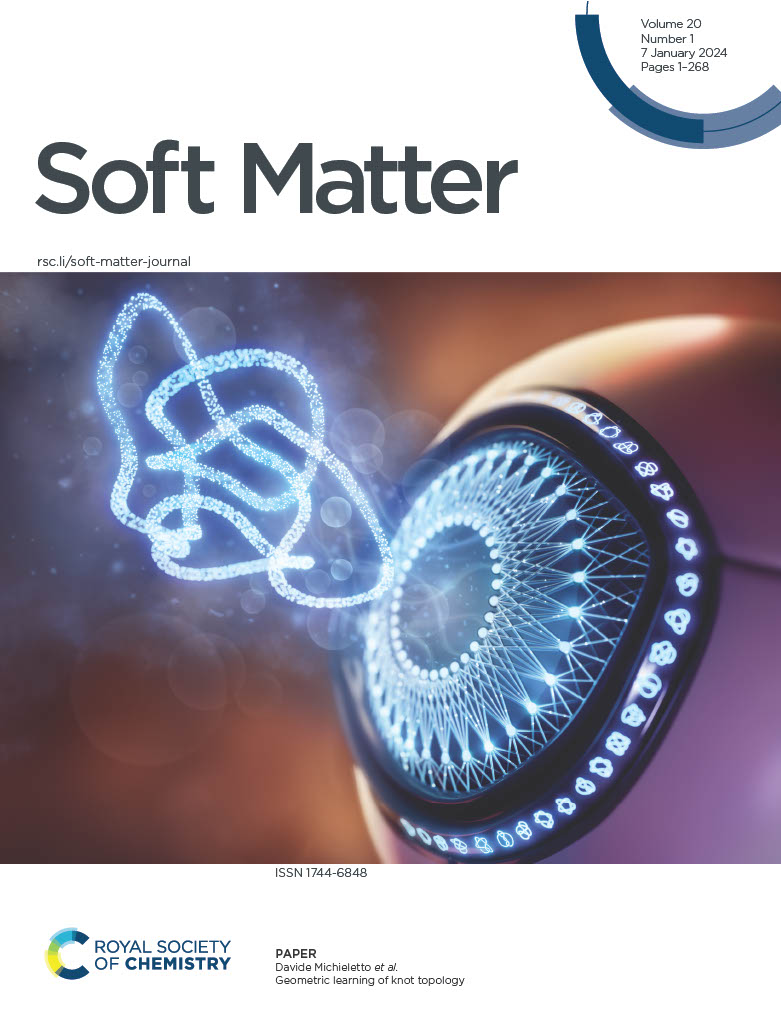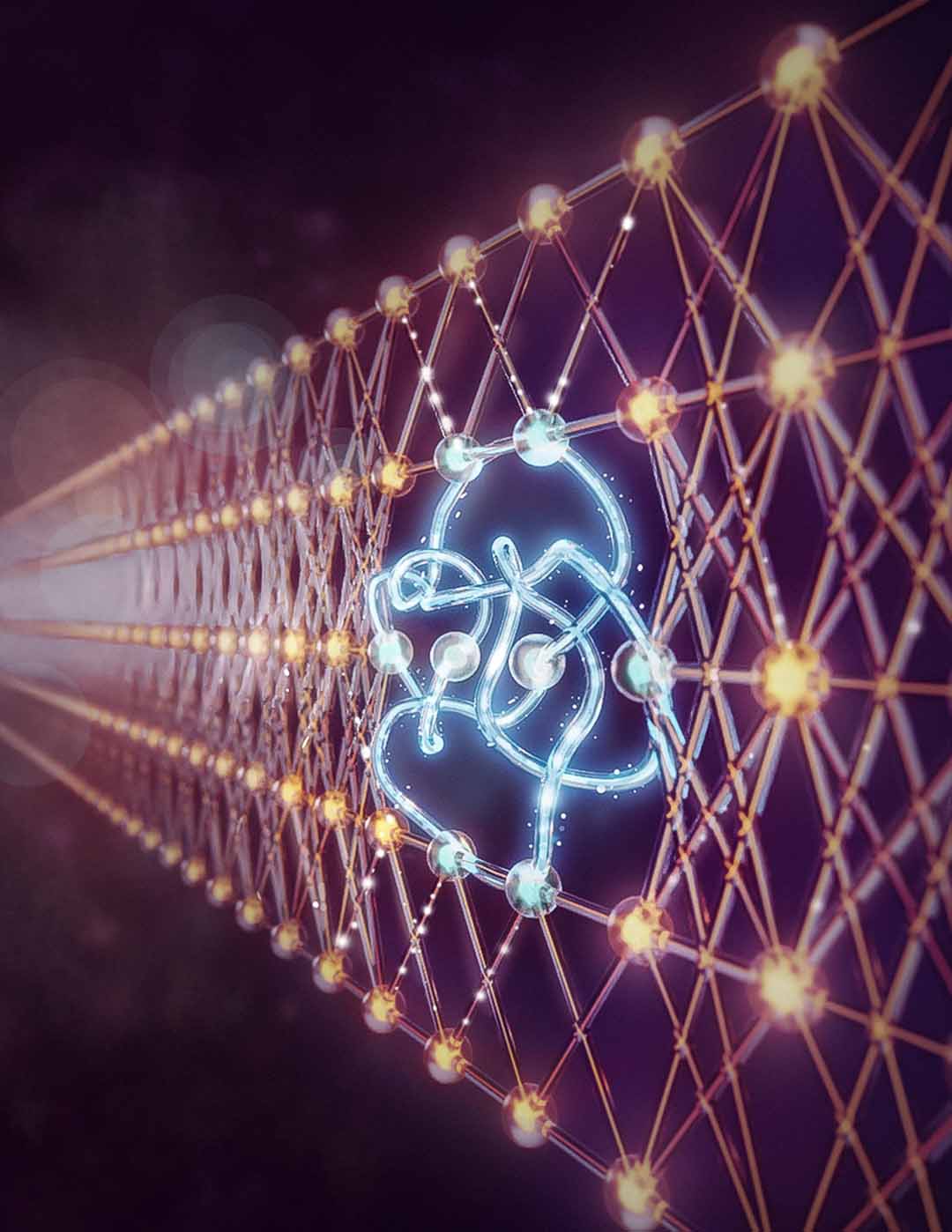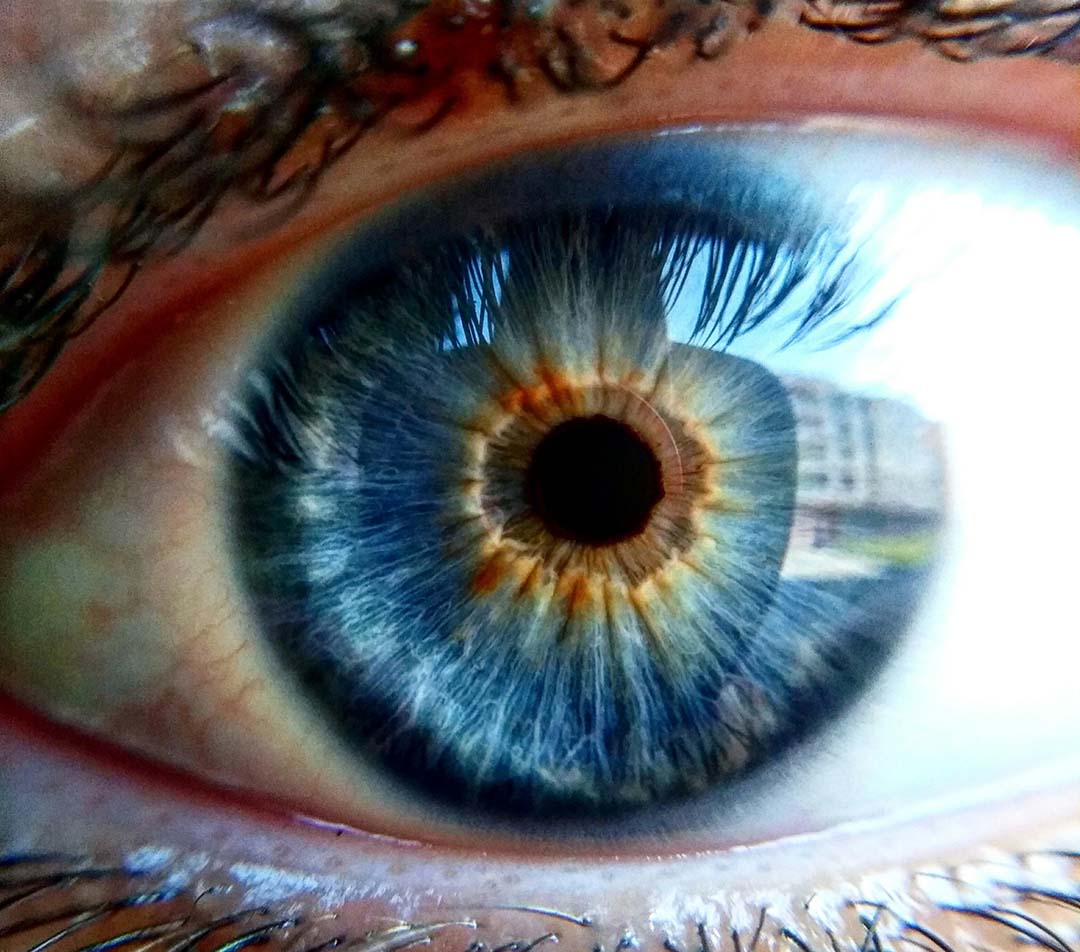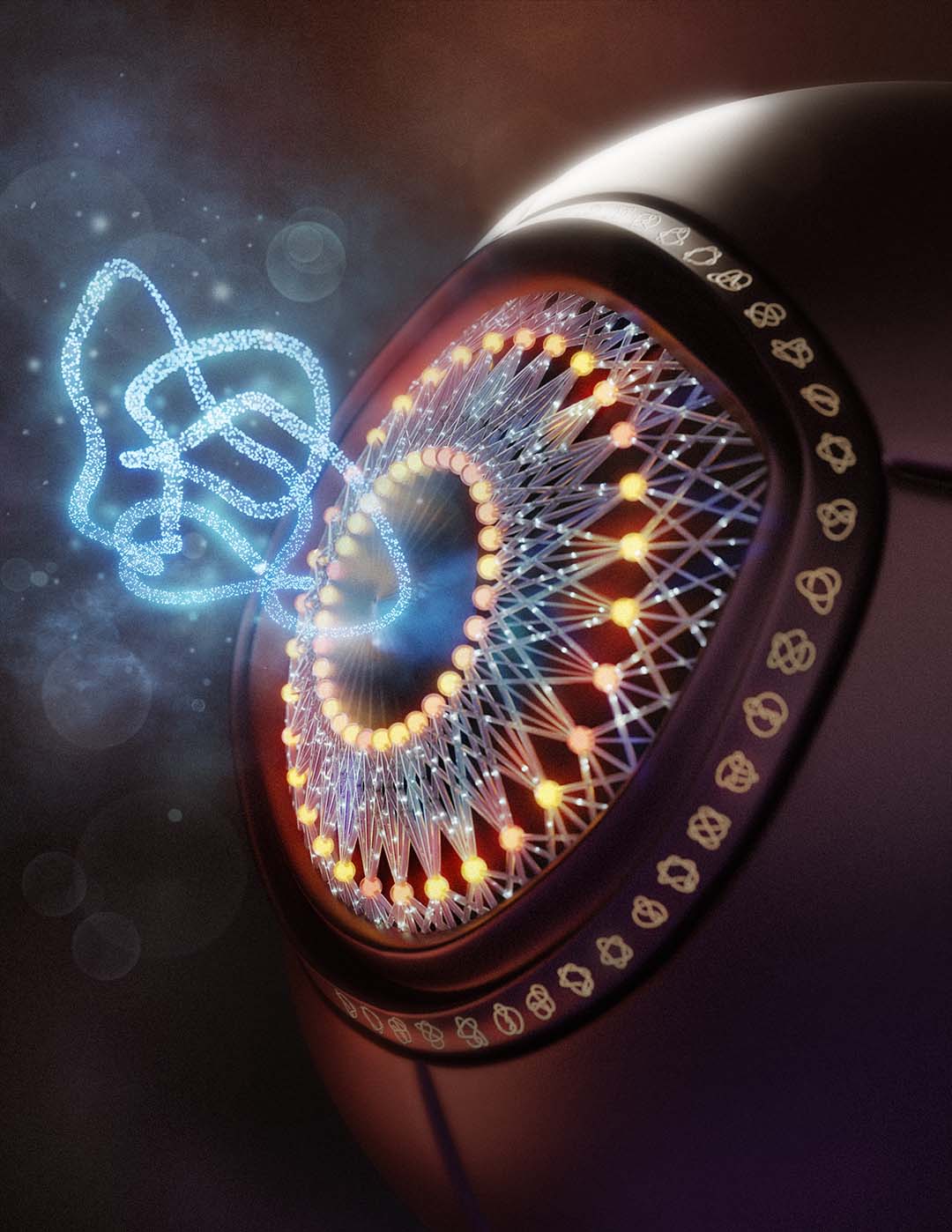AI-Powered Knot Detection

Scientific illustration created by BK SciViz owner, Brad Krajina for Prof. Davide Michielleto (University of Edinburgh).
The Problem.
Prof. Davide Michielleto's group (University of Edinburgh) discovered a new method for identifying knots, such as those that form in DNA, using a new machine learning approach. Prof. Michielleto needed a cover art illustration that convey the core discoveries of their new paper. However, the subject matter was esoteric: an unsual intersection of machine learning, the mathematical theory of knots, and polymer physics. Read below for a case study of the design process by BK SciViz owner, Brad Krajina.
An Initial Solution.
Davide initially had a cool idea, which was to take the architecture of a feed-forward machine learning network, but to embed a knot inside of it. I worked up an initial design for this idea, but I also started brainstorming some alternative solutions.

Finding Inspiration.
When Clients come with a specific design idea, I also always like to give them opportunities to explore solutions they might not have considered. I was intrigued by an observation I had made about the human eye. In the iris of many people, there are visible radial lines emanating outward, almost evoking a similar structure as a radially organized feed-forward network.

An Alternative Solution.
Building on this inspiration, I crafted another solution: A robotic eye that "sees" the knots and whose iris is organized by a radial pattern of nodes and connections akin to a feed-forward machine learning network. Drawing from the Michieletto lab's paper, I featured the Conway knot: A knot that is indistinguishable from the unknot using conventional methods that was correctly identified with their technique.

Refining the Design.
The Michielleto group liked the idea, but they wanted to refine it a bit to make it more consistent with the aesthetics and format for Soft Matter, where the paper had been resubmitted. I brightened the palette to bring a more up-beat down and reshaped the composition to bring more focus onto the knot, itself.

The Outcome.
By reimagining Prof. Michielleto's complex research into a visually compelling representation, this work enabled the Michielleto group's work to be featured on the cover of Soft Matter. The final product will help drive visibility to their work and frame a difficult-to-grasp idea in a digestible form.
Contact
info@bksciviz.com
Email us directly for a free consultation.

